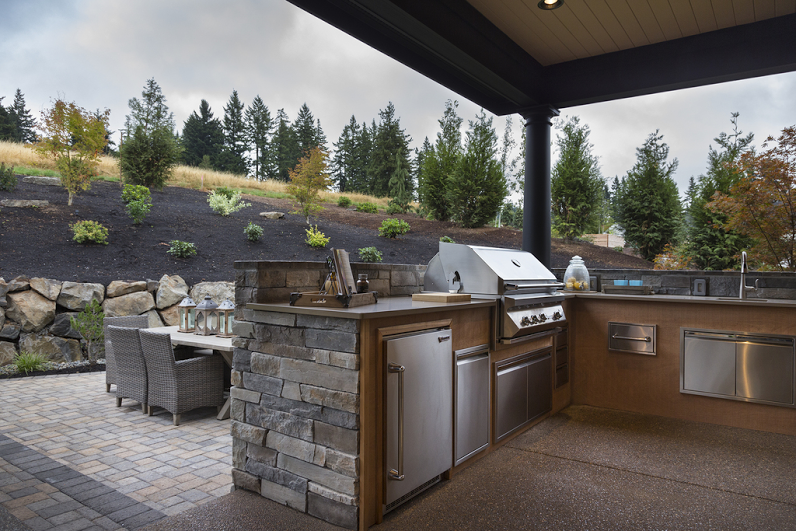6 things to know BEFORE planning your outdoor kitchen
Dan Gregory, Editor at Houseplans.com, shares expert advice for outdoor kitchen design.
Published Aug 20, 2015 5:00 AM
We may earn revenue from the products available on this page and participate in affiliate programs.
An outdoor kitchen can be as simple or elaborate as your taste and budget allow. A sink, counter, and barbecue grill — portable or built-in — are the basic features. But under-counter refrigerators, prefab cooking islands, smokers, kitchen storage drawers and cabinets, bar-and-sink sets, are common features — and all are designed specifically for outdoor use. Outdoor fireplaces and pizza ovens are also popular.
1. Consider placement. It should be near your main entertaining spaces, but not block circulation or view corridors. Make sure the actual cooking area is away from general traffic flow.
2. Think about when it will be used and whether will you need shelter from sun or rain for comfortable cooking. If it will only be used during warm months it should be unobtrusive the rest of the year.
3. Analyze your current indoor kitchen to see what works best regarding appliance placement; ask yourself how you would improve the work triangle for outdoors. Adequate counter space is essential and more important than having a sink (you can always use the indoor kitchen one, if it’s not too far away) but you will always need space to set the food before and after grilling.
6. In some case you may be able to situate an outdoor grilling area adjacent to your indoor kitchen so a pass-through or dedicated opening could allow you to have the best of both worlds.
See more from Dan at Houseplans.com, where all of the plans for outdoor kitchens shown here are available in more detail.
